Chrysler 2009 Annual Report Download - page 146
Download and view the complete annual report
Please find page 146 of the 2009 Chrysler annual report below. You can navigate through the pages in the report by either clicking on the pages listed below, or by using the keyword search tool below to find specific information within the annual report.-
 1
1 -
 2
2 -
 3
3 -
 4
4 -
 5
5 -
 6
6 -
 7
7 -
 8
8 -
 9
9 -
 10
10 -
 11
11 -
 12
12 -
 13
13 -
 14
14 -
 15
15 -
 16
16 -
 17
17 -
 18
18 -
 19
19 -
 20
20 -
 21
21 -
 22
22 -
 23
23 -
 24
24 -
 25
25 -
 26
26 -
 27
27 -
 28
28 -
 29
29 -
 30
30 -
 31
31 -
 32
32 -
 33
33 -
 34
34 -
 35
35 -
 36
36 -
 37
37 -
 38
38 -
 39
39 -
 40
40 -
 41
41 -
 42
42 -
 43
43 -
 44
44 -
 45
45 -
 46
46 -
 47
47 -
 48
48 -
 49
49 -
 50
50 -
 51
51 -
 52
52 -
 53
53 -
 54
54 -
 55
55 -
 56
56 -
 57
57 -
 58
58 -
 59
59 -
 60
60 -
 61
61 -
 62
62 -
 63
63 -
 64
64 -
 65
65 -
 66
66 -
 67
67 -
 68
68 -
 69
69 -
 70
70 -
 71
71 -
 72
72 -
 73
73 -
 74
74 -
 75
75 -
 76
76 -
 77
77 -
 78
78 -
 79
79 -
 80
80 -
 81
81 -
 82
82 -
 83
83 -
 84
84 -
 85
85 -
 86
86 -
 87
87 -
 88
88 -
 89
89 -
 90
90 -
 91
91 -
 92
92 -
 93
93 -
 94
94 -
 95
95 -
 96
96 -
 97
97 -
 98
98 -
 99
99 -
 100
100 -
 101
101 -
 102
102 -
 103
103 -
 104
104 -
 105
105 -
 106
106 -
 107
107 -
 108
108 -
 109
109 -
 110
110 -
 111
111 -
 112
112 -
 113
113 -
 114
114 -
 115
115 -
 116
116 -
 117
117 -
 118
118 -
 119
119 -
 120
120 -
 121
121 -
 122
122 -
 123
123 -
 124
124 -
 125
125 -
 126
126 -
 127
127 -
 128
128 -
 129
129 -
 130
130 -
 131
131 -
 132
132 -
 133
133 -
 134
134 -
 135
135 -
 136
136 -
 137
137 -
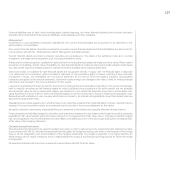 138
138 -
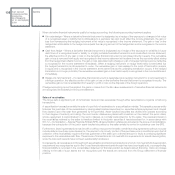 139
139 -
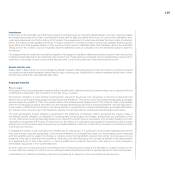 140
140 -
 141
141 -
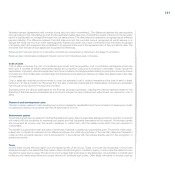 142
142 -
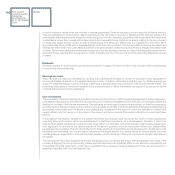 143
143 -
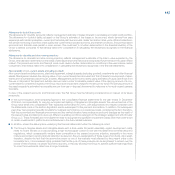 144
144 -
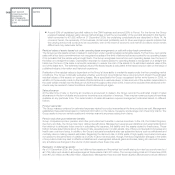 145
145 -
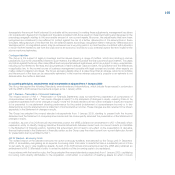 146
146 -
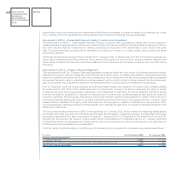 147
147 -
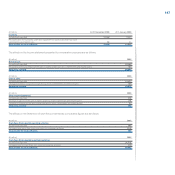 148
148 -
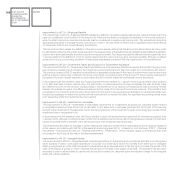 149
149 -
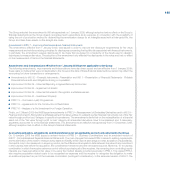 150
150 -
 151
151 -
 152
152 -
 153
153 -
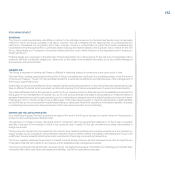 154
154 -
 155
155 -
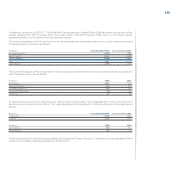 156
156 -
 157
157 -
 158
158 -
 159
159 -
 160
160 -
 161
161 -
 162
162 -
 163
163 -
 164
164 -
 165
165 -
 166
166 -
 167
167 -
 168
168 -
 169
169 -
 170
170 -
 171
171 -
 172
172 -
 173
173 -
 174
174 -
 175
175 -
 176
176 -
 177
177 -
 178
178 -
 179
179 -
 180
180 -
 181
181 -
 182
182 -
 183
183 -
 184
184 -
 185
185 -
 186
186 -
 187
187 -
 188
188 -
 189
189 -
 190
190 -
 191
191 -
 192
192 -
 193
193 -
 194
194 -
 195
195 -
 196
196 -
 197
197 -
 198
198 -
 199
199 -
 200
200 -
 201
201 -
 202
202 -
 203
203 -
 204
204 -
 205
205 -
 206
206 -
 207
207 -
 208
208 -
 209
209 -
 210
210 -
 211
211 -
 212
212 -
 213
213 -
 214
214 -
 215
215 -
 216
216 -
 217
217 -
 218
218 -
 219
219 -
 220
220 -
 221
221 -
 222
222 -
 223
223 -
 224
224 -
 225
225 -
 226
226 -
 227
227 -
 228
228 -
 229
229 -
 230
230 -
 231
231 -
 232
232 -
 233
233 -
 234
234 -
 235
235 -
 236
236 -
 237
237 -
 238
238 -
 239
239 -
 240
240 -
 241
241 -
 242
242 -
 243
243 -
 244
244 -
 245
245 -
 246
246 -
 247
247 -
 248
248 -
 249
249 -
 250
250 -
 251
251 -
 252
252 -
 253
253 -
 254
254 -
 255
255 -
 256
256 -
 257
257 -
 258
258 -
 259
259 -
 260
260 -
 261
261 -
 262
262 -
 263
263 -
 264
264 -
 265
265 -
 266
266 -
 267
267 -
 268
268 -
 269
269 -
 270
270 -
 271
271 -
 272
272 -
 273
273 -
 274
274 -
 275
275 -
 276
276 -
 277
277 -
 278
278 -
 279
279 -
 280
280 -
 281
281 -
 282
282 -
 283
283 -
 284
284 -
 285
285 -
 286
286 -
 287
287 -
 288
288 -
 289
289 -
 290
290 -
 291
291 -
 292
292 -
 293
293 -
 294
294 -
 295
295 -
 296
296 -
 297
297 -
 298
298 -
 299
299 -
 300
300 -
 301
301 -
 302
302 -
 303
303 -
 304
304 -
 305
305 -
 306
306 -
 307
307 -
 308
308 -
 309
309 -
 310
310 -
 311
311 -
 312
312 -
 313
313 -
 314
314 -
 315
315 -
 316
316 -
 317
317 -
 318
318 -
 319
319 -
 320
320 -
 321
321 -
 322
322 -
 323
323 -
 324
324 -
 325
325 -
 326
326 -
 327
327 -
 328
328 -
 329
329 -
 330
330 -
 331
331 -
 332
332 -
 333
333 -
 334
334 -
 335
335 -
 336
336 -
 337
337 -
 338
338 -
 339
339 -
 340
340 -
 341
341 -
 342
342 -
 343
343 -
 344
344 -
 345
345 -
 346
346 -
 347
347 -
 348
348 -
 349
349 -
 350
350 -
 351
351 -
 352
352 -
 353
353 -
 354
354 -
 355
355 -
 356
356 -
 357
357 -
 358
358 -
 359
359 -
 360
360 -
 361
361 -
 362
362 -
 363
363 -
 364
364 -
 365
365 -
 366
366 -
 367
367 -
 368
368 -
 369
369 -
 370
370 -
 371
371 -
 372
372 -
 373
373 -
 374
374
 |
 |

145
tax assets to the amount that it believes it is probable will be recovered. In making these adjustments, management has taken
into consideration figures from budgets and forecasts consistent with those used for impairment testing and discussed in the
preceding paragraph relating to the recoverable amount of non-current assets. Moreover, the adjustments that have been
recognised are considered to be sufficient to protect against the risk of a further deterioration of the assumptions in these
forecasts, taking account of the fact that the net deferred assets accordingly recognised relate to temporary differences and
tax losses which, to a significant extent, may be recovered over a very long period, and are therefore consistent with a situation
in which the time needed to exit from the crisis and for an economic recovery to occur extends beyond the term implicit in the
above-mentioned estimates.
Contingent liabilities
The Group is the subject of legal proceedings and tax issues covering a range of matters, which are pending in various
jurisdictions. Due to the uncertainty inherent in such matters, it is difficult to predict the final outcome of such matters. The cases
and claims against the Group often raise difficult and complex factual and legal issues, which are subject to many uncertainties,
including but not limited to the facts and circumstances of each particular case and claim, the jurisdiction and the differences
in applicable law. In the normal course of business management consults with legal counsel and certain other experts on
matter related to litigation and taxes. The Group accrues a liability when it is determined that an adverse outcome is probable
and the amount of the loss can be reasonably estimated. In the event an adverse outcome is possible or an estimate is not
determinable, the matter is disclosed.
Accounting principles, amendments and interpretations adopted from 1 January 2009
The Group has applied the following Standards, amendments and interpretations, which include those revised in conjunction
with the IASB’s 2008 annual improvements project, since 1 January 2009.
IAS 1 Revised – Presentation of Financial Statements
The revised version of IAS 1 - Presentation of Financial Statements does not permit the presentation of components of
comprehensive income (that is “non-owner changes in equity”) in the statement of changes in equity, requiring these to be
presented separately from owner changes in equity. Under the revised standard, all non-owner changes in equity are required
to be presented in one statement showing performance for the period (a statement of comprehensive income) or in two
statements (an income statement and a statement of comprehensive income). These changes are also required to be shown
separately in the Statement of changes in equity.
The Group has adopted the revised standard retrospectively from 1 January 2009, electing to present both the Income
statement and the Statement of comprehensive income and has consequently amended the presentation of the Statement of
changes in equity.
In addition, as part of its 2008 annual improvements project, the IASB published an amendment to IAS 1 (Revised) which
requires an entity to classify hedging derivative financial instruments between current and non-current assets and liabilities
in the Statement of financial position. Adopting this amendment did not lead to any effect on the presentation of derivative
financial instruments in the Statement of financial position as the Group uses the mixed current/non-current distinction format
for presentation that is permitted by IAS 1.
IAS 23 Revised – Borrowing Costs
The revised version of the standard removes the option previously available, and selected by the Group until 31 December
2008, of immediately recognising as an expense borrowing costs that relate to assets that take a substantial period of time
to get ready for use or sale (qualifying assets). As part of its 2008 annual improvements project the IASB also published an
amendment to IAS 23 (Revised) in order to revise the definition of the borrowing costs to be capitalised.
In accordance with the transition rules, the Group adopted the revised standard prospectively from 1 January 2009, capitalising
borrowing costs directly attributable to the acquisition, construction or production of qualifying assets for which it incurs
